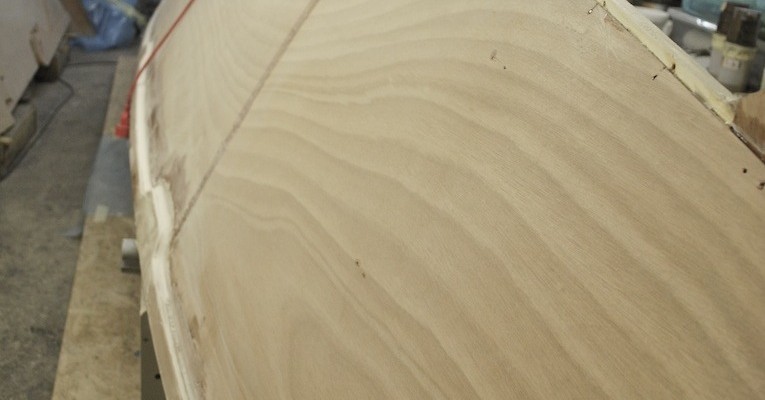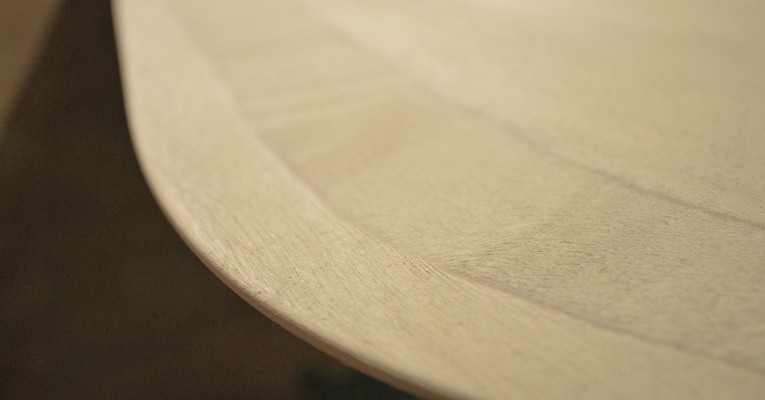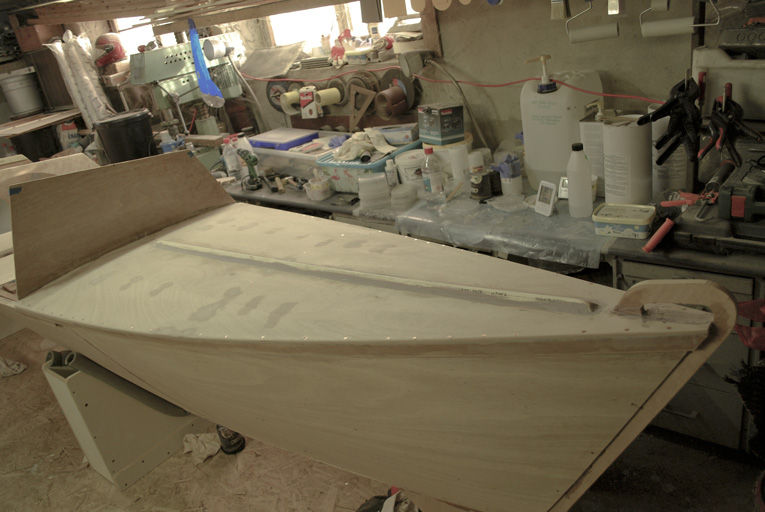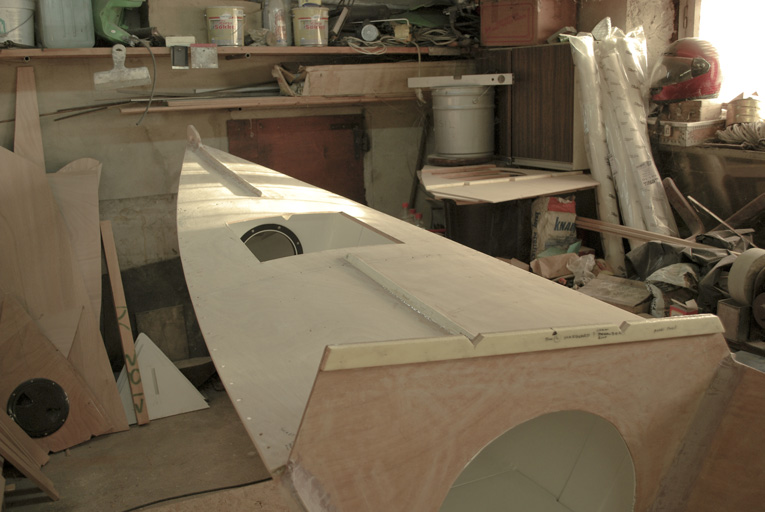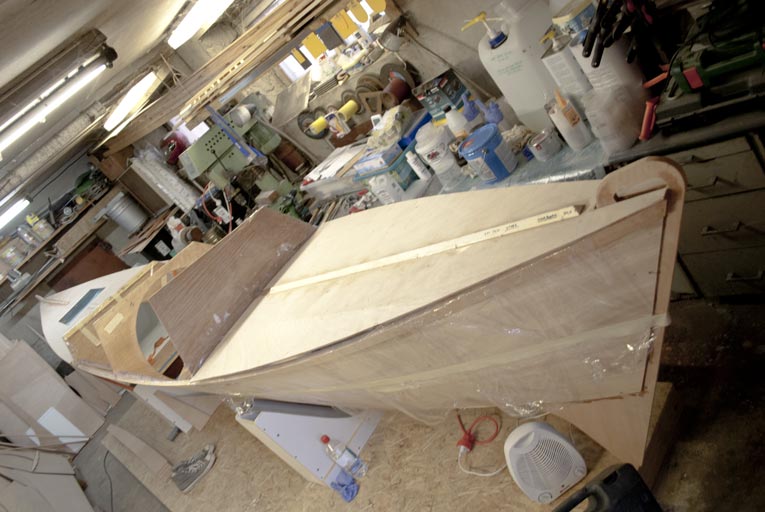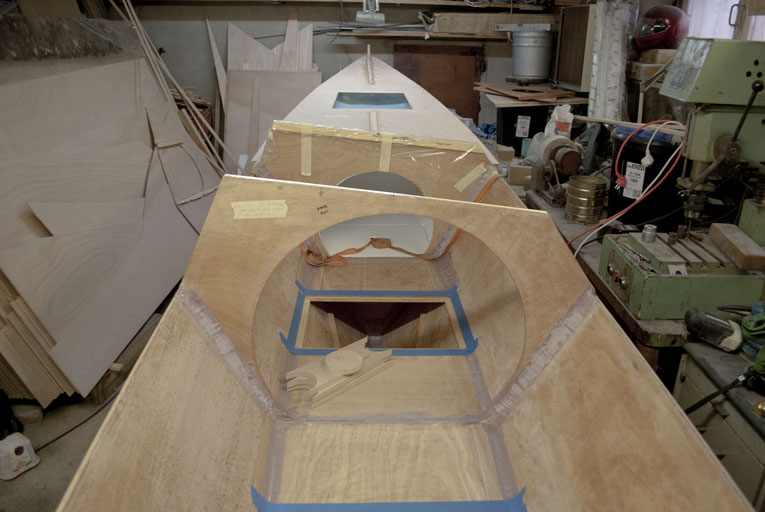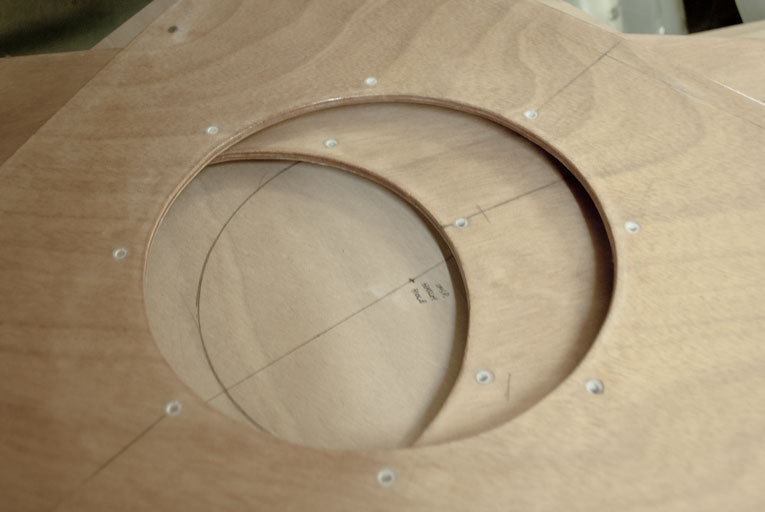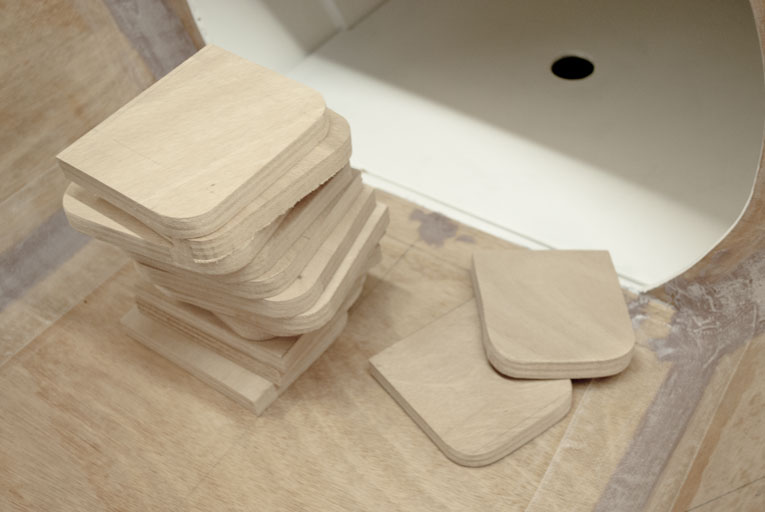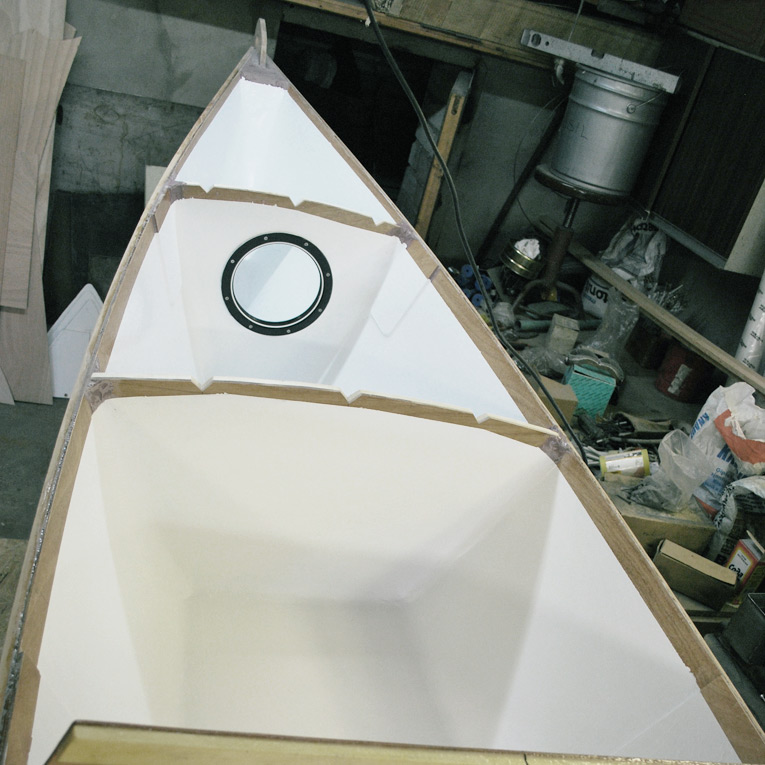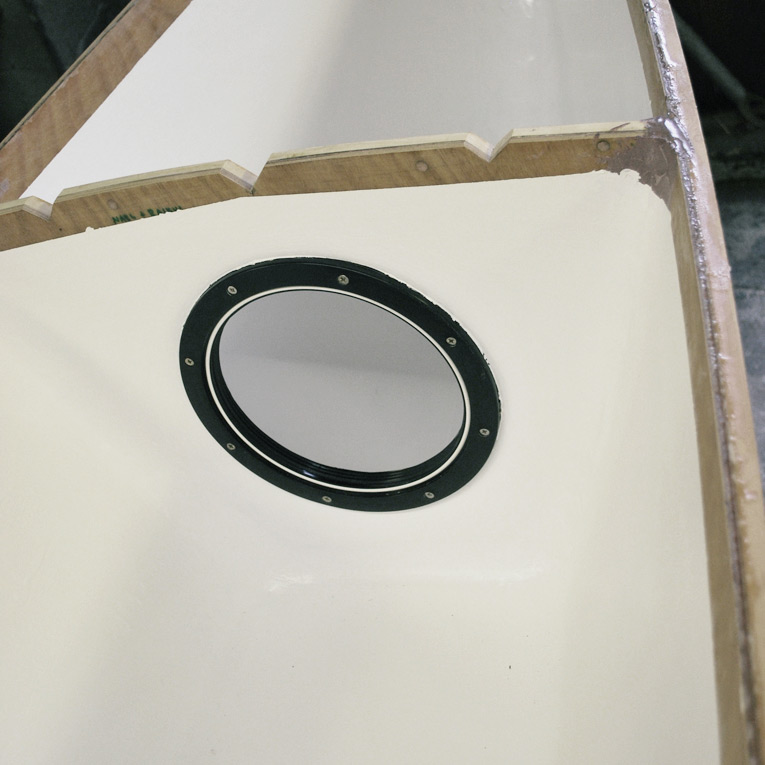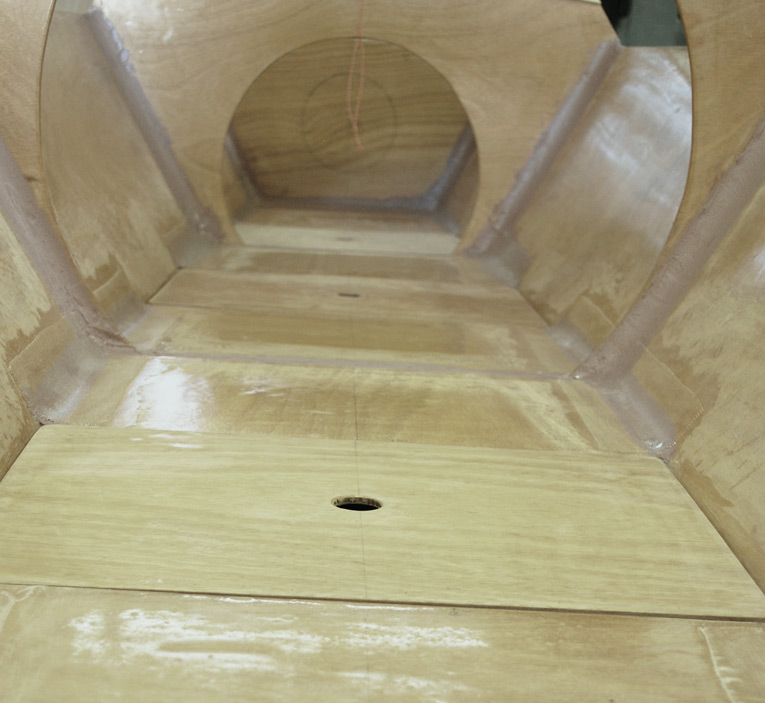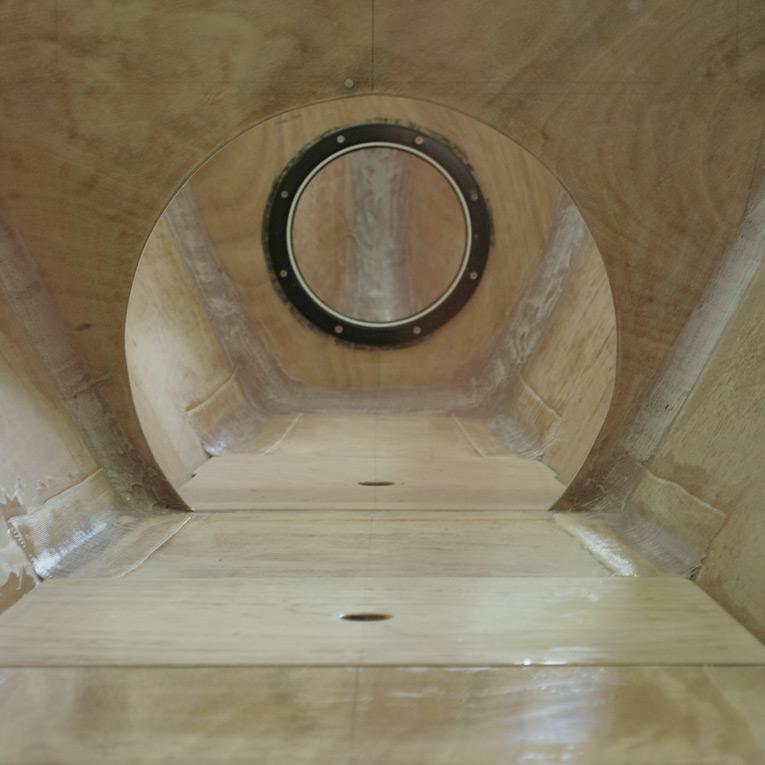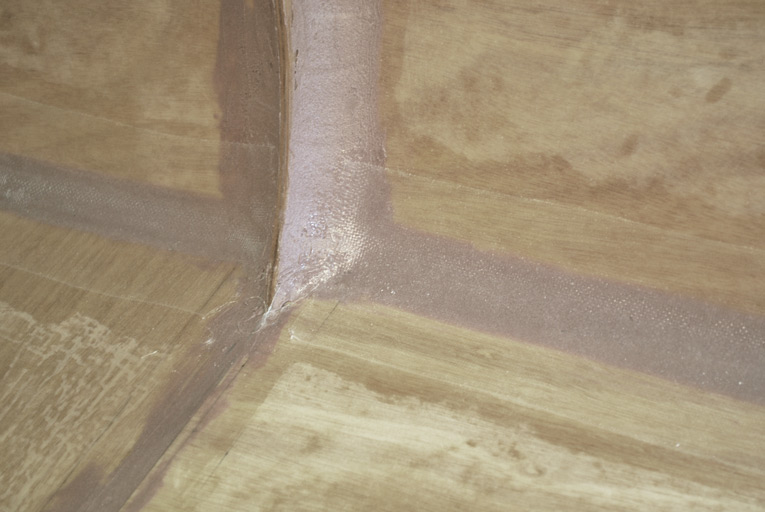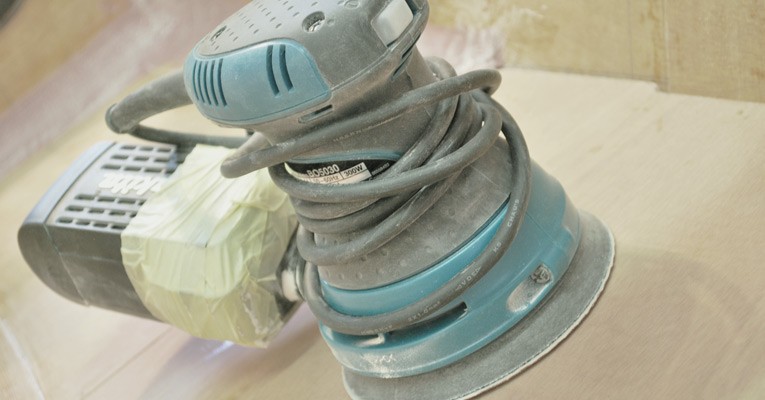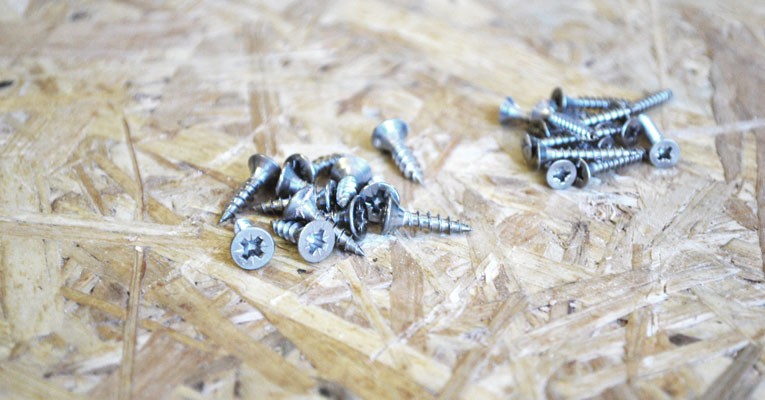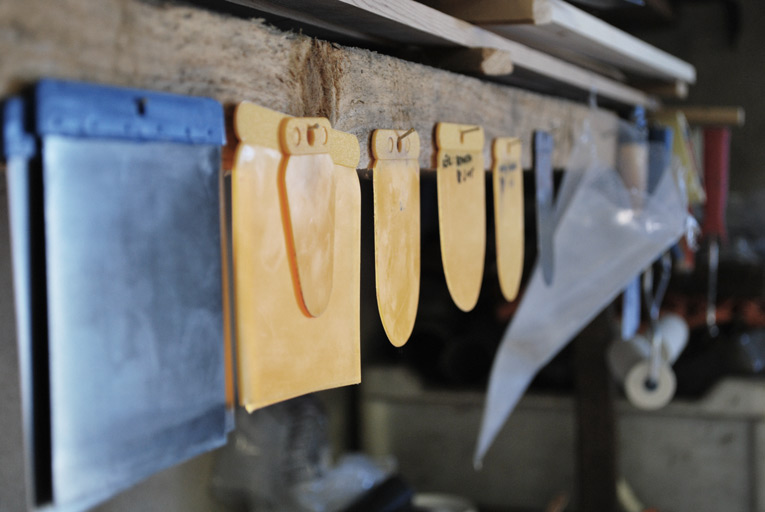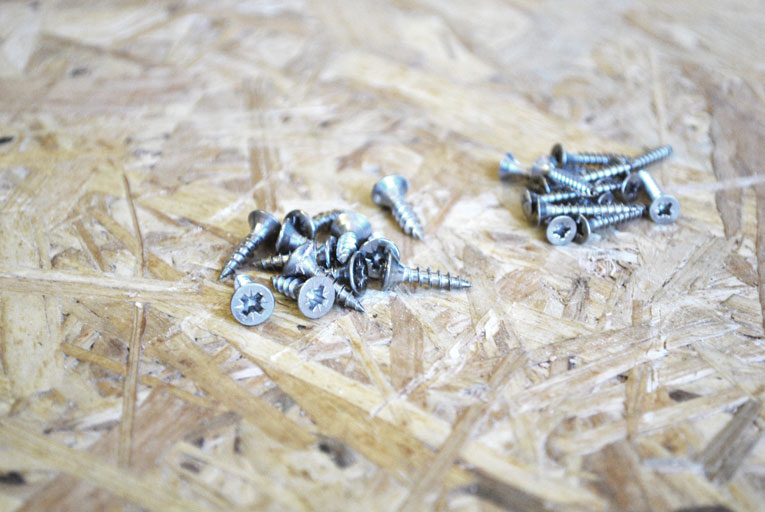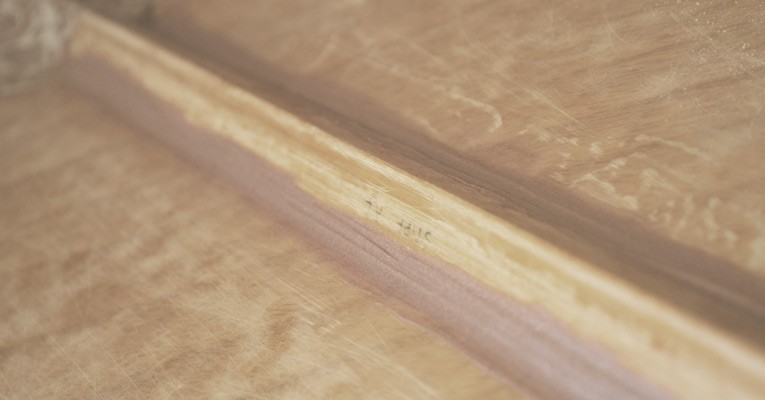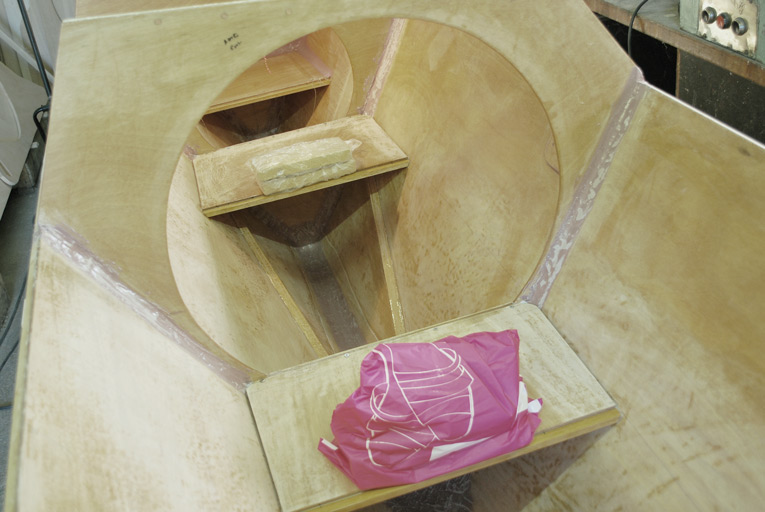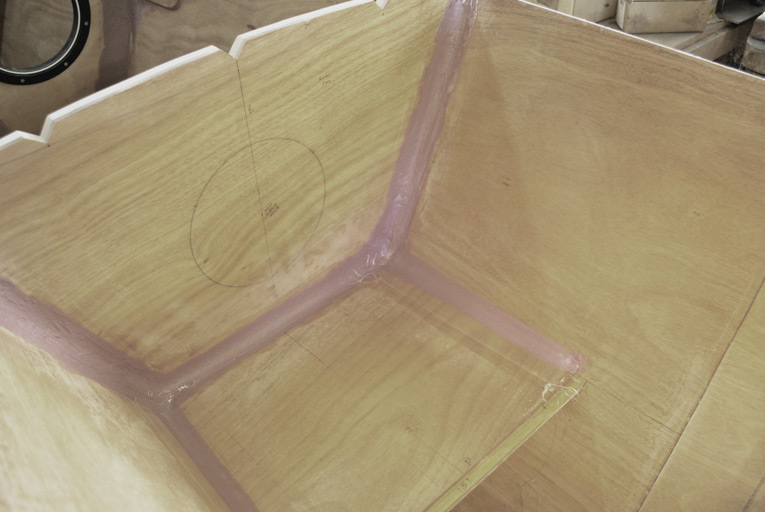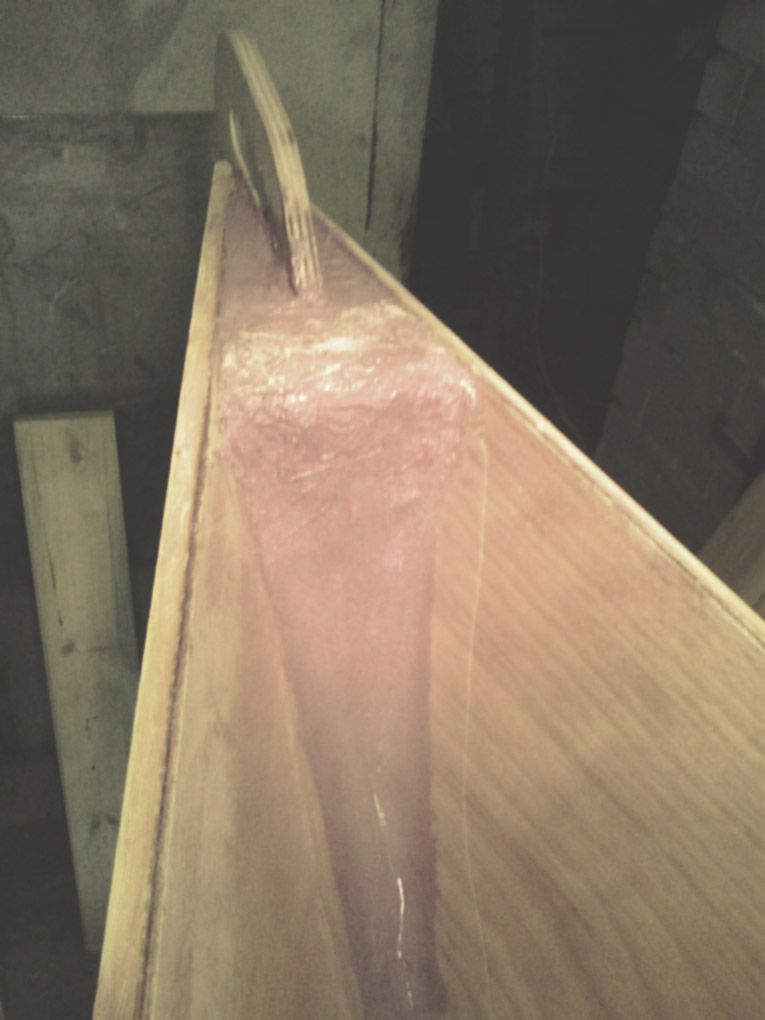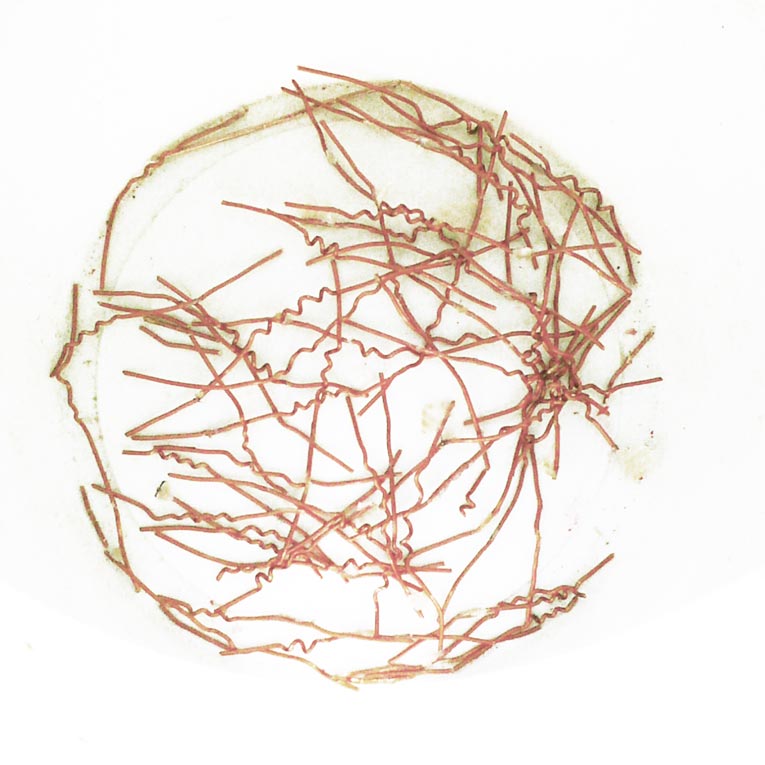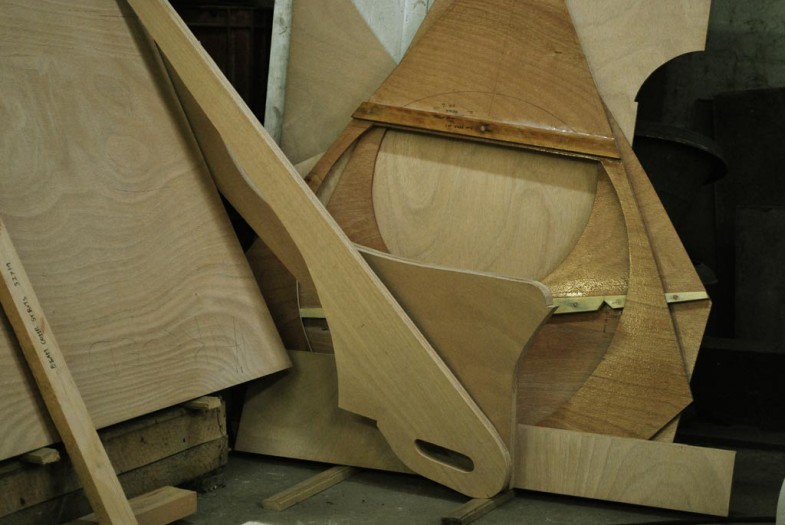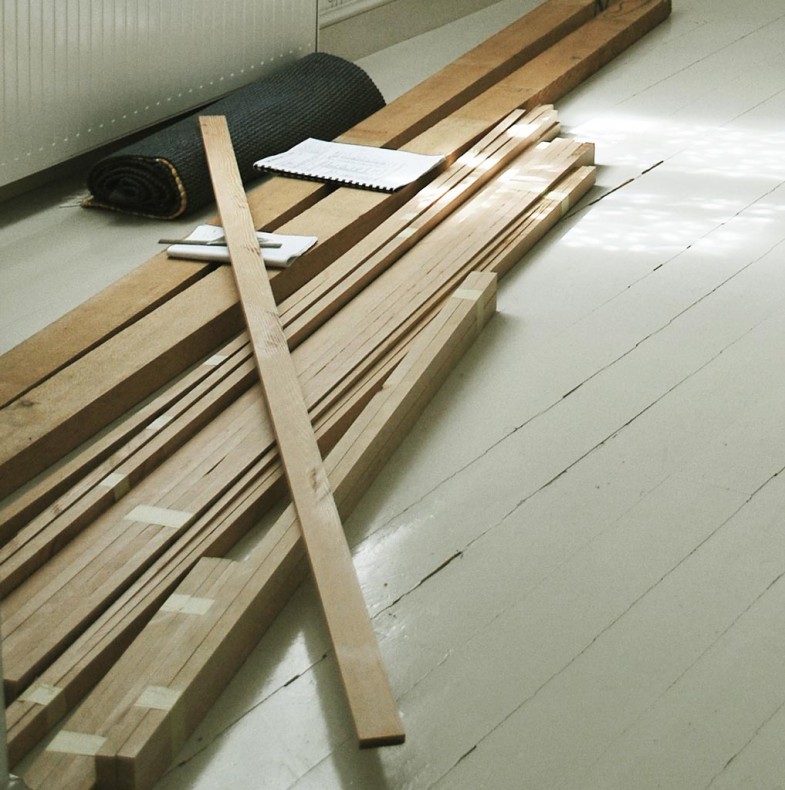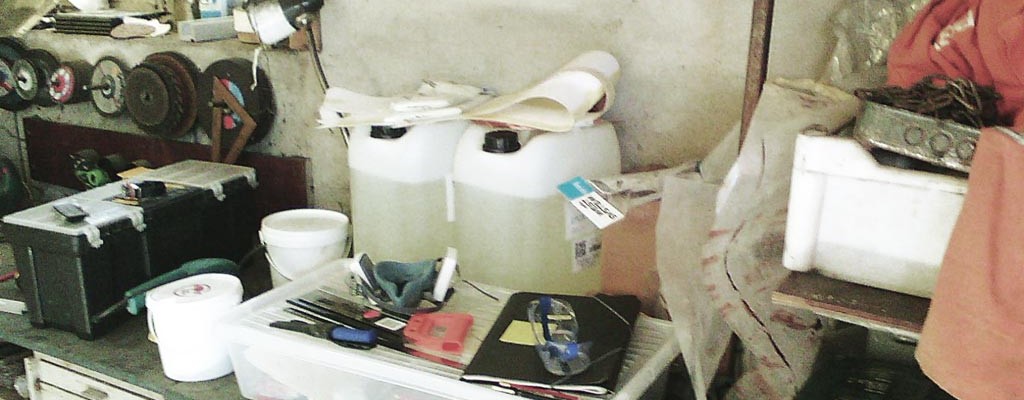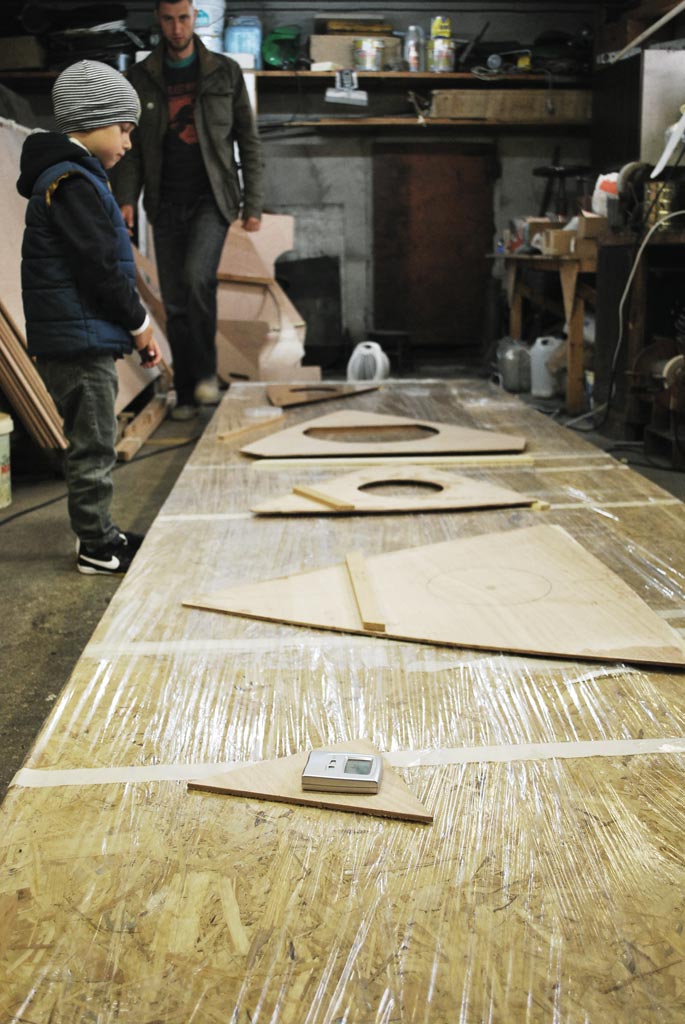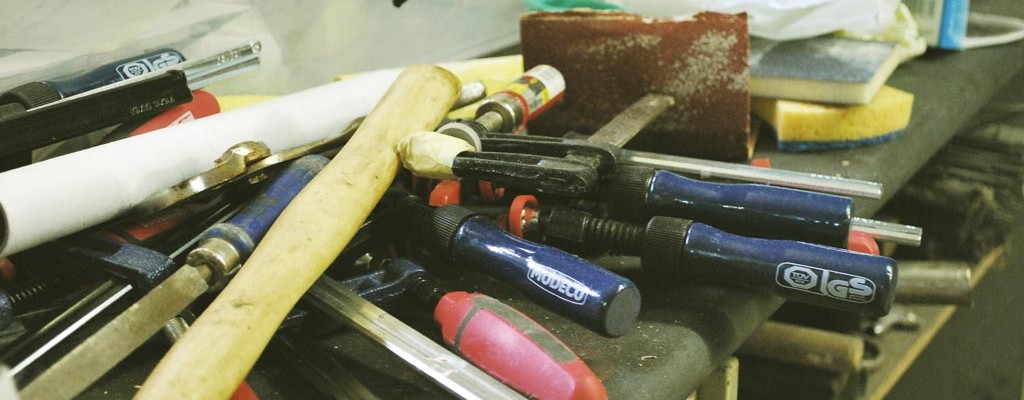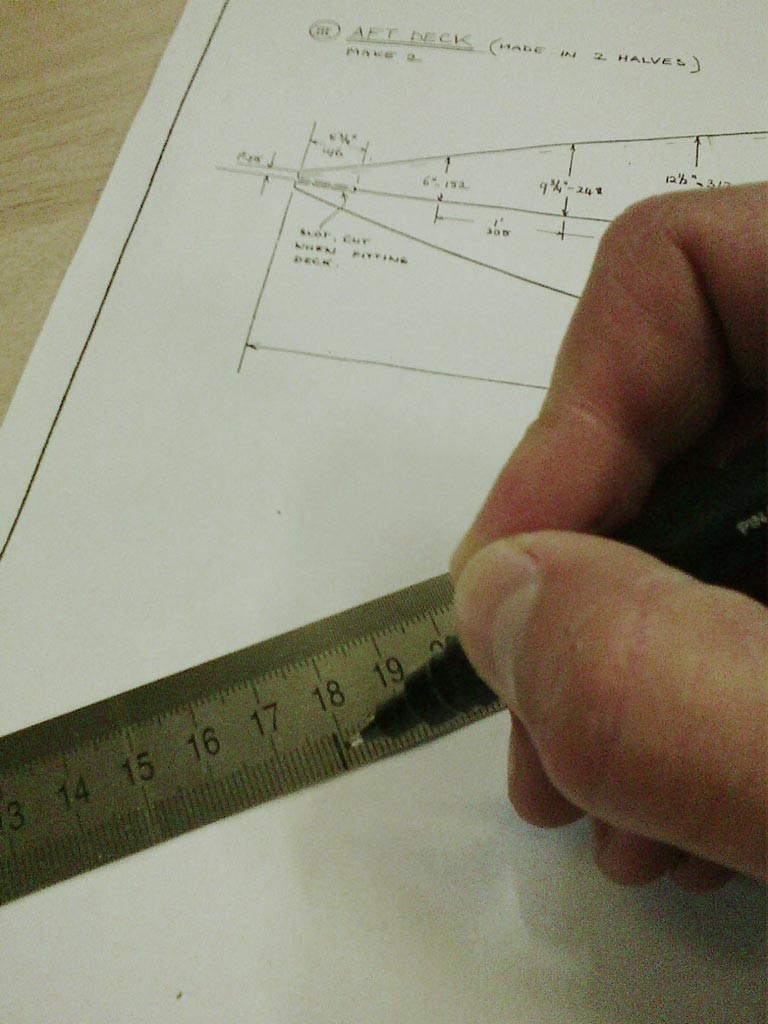Dear Diary,
it has been long time since I last wrote to you… but, still, there have been some advancement in the Garage. What I managed to achieve is — despite of too cold spring (bad for epoxy cooking) and too hot early summer (hard to stay put in shady garage) — gluing coaming for main hatchway and constructing main hatch, glassing topsides of the hull (decks and cabin). Later process has been pretty emotional :p — getting glass over the upper deck stringers without air bubbles and sticking it onto underside of the sheerstringer was business that one may call PITA. Nevertheless, work itself is the best teacher and when I finally got into glassing the forward deck I managed to execute the process with minimal losses i.e. decently smooth finish, which requires minimal sanding later on.
So lets have a quick glance of the mess I have created (hull is turned so we could have a clear view of the sight).
1. exhibit A
– after fiberglass on deck and sides of the sheerstringer was wetted, next move was to try tap it into place underside of the sheerstringer using a brush. With not much of luck. Things got under control when I brushed undersides over with epoxy and WS Microlight filler.
Note that I have already covered up some of the traces (using good old elbow grease and 60 grit sandpaper).
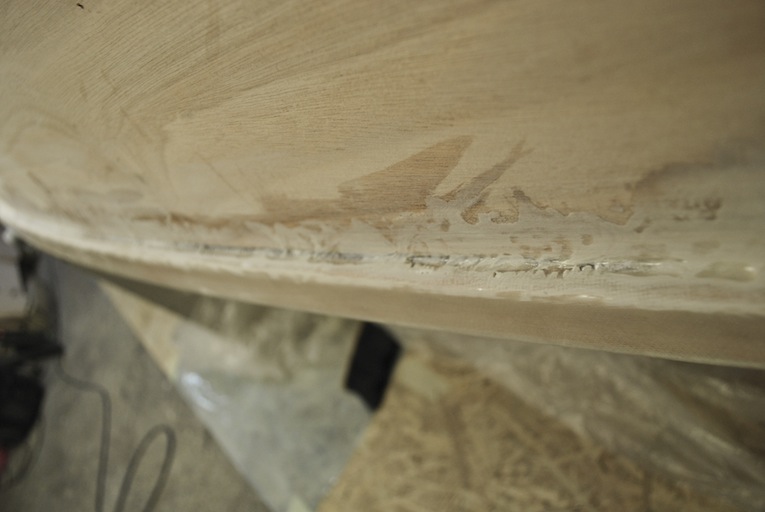
2. exhibit B
– so here you can see me trying to get glassfiber down from cabin sides stick to underside of the sheerstringer, but this time, I didn’t cut the glass flush with the corner – instead I let the epoxy set for a while, then after it got really sticky, I removed the excess and applied fillet (Microlight) right a way on top of it.
Again, this evidence have had some touch ups already.

3. exhibit C
Well now I can be proud of myself and honor my humble figure with Distinguished Service Order as I demonstrated unprecedented capability to evolve and learn from past mistakes whereas this time (forward deck) I produced nice and neat fillets (Microlight) and let them set semi-hard before I moved to sheerstringers undersides with glassing. I removed the excess of the fiberglass just before applying saturation coat (mixed again with Microlight to avoid sagging).
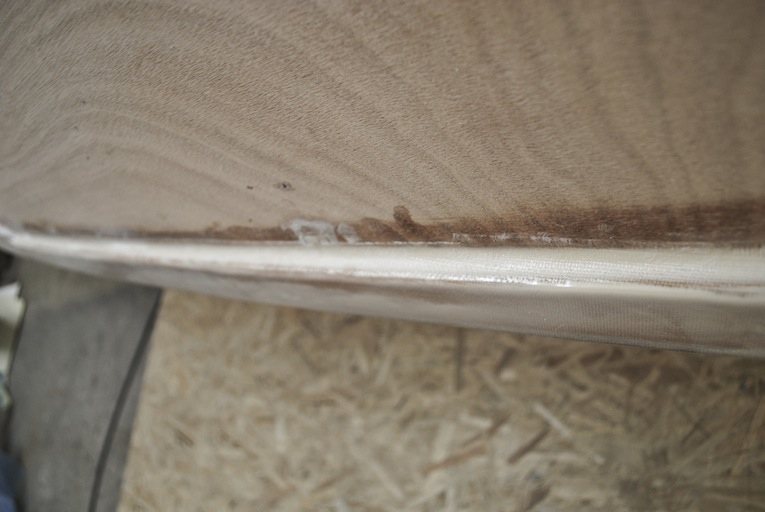
PS! Decks and cabin sides saturation coat were thickened with Microlight, which is rather easy to work with (whether applying or sanding it).
So now the itinerary offers me adventure down under – fillets around the keel, aft deck sheerstringer undersides, stem & stern, sanding, fiberglass tape, sanding, glass for one side, sanding, glass for other side, sanding again…


